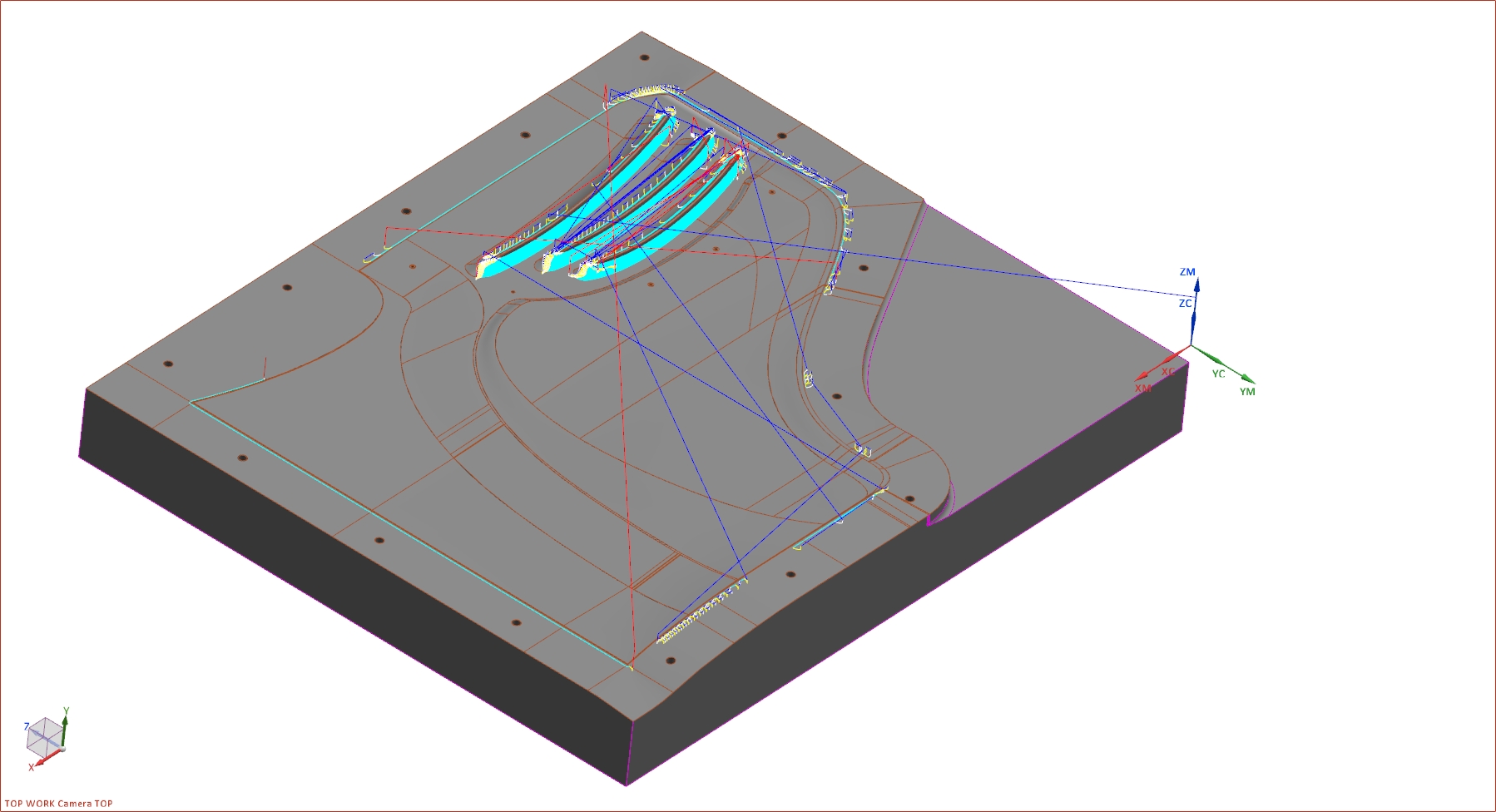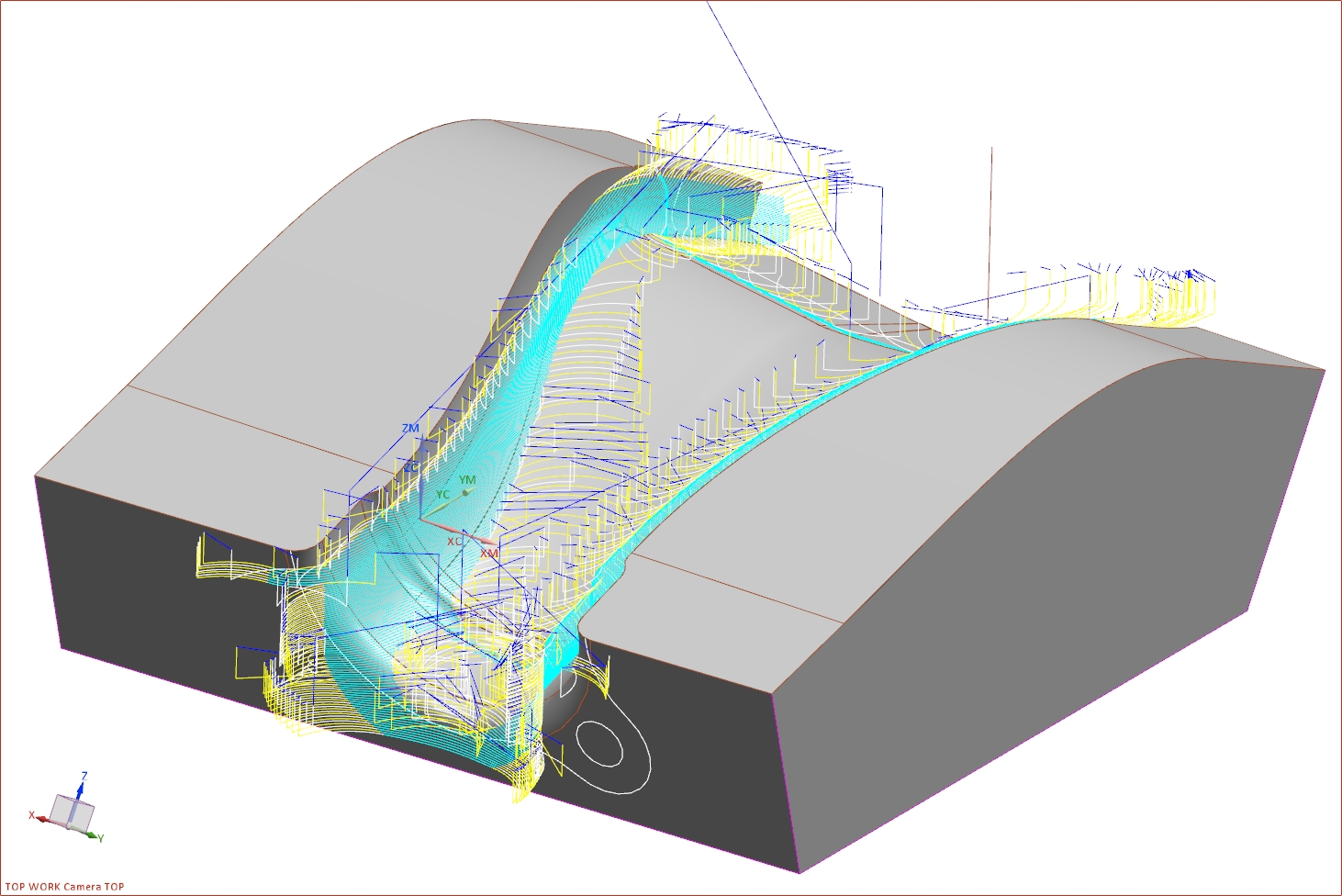Design & manufacturing software
Software plays a major role these days in defining the Formula One racecar, providing engineers with the primary tools for designing and manufacturing the vehicles.
Thanks to its highly competitive culture and substantial budgets, Formula One has always been at the leading edge of software technology, embracing the latest software tools in pursuit of every performance advantage. These range from weight reduction and improved aerodynamic efficiency to decreased development and manufacturing times and costs.
The evolution of the Formula One car closely follows that of the software tools used to create them, and their impact on performance should not be underestimated. Computer aided engineering (CAE) software provides the design freedom, evaluation and historically limitations to conceive and realise the complex geometries, structures and mechanisms that create the cars.
It is also important to consider that design and manufacturing are inextricably linked, as the design solutions that evolve must be realisable under tight timescales to ensure that the teams are on the grid when the lights go out on a Sunday.
This drives the software tools available. Computer aided design (CAD) software began replacing the drawing boards in Formula One drawing offices more than 25 years ago, and became ubiquitous in the early 1990s. It empowers engineers with a vast selection of design tools to explore, develop, refine and communicate their ideas and solutions.
It would be pointless, however, if these could not be turned into physical parts, so manufacturing technology has had to keep pace with design. Computer aided manufacturing (CAM) software allows the complex CAD model geometries to be translated into languages that computer numerical control (CNC) machine tools convert into precise movements. This allows engineers to generate machining programs and strategies to produce the parts designed in CAD that could not be made manually.
It would be possible to focus on specific commands in CAD or CAM, for example the surfacing functions used to create the complex aerodynamic surfaces, and analyse the impact they have on performance. However, to highlight just how reliant on software Formula One has become, it is worth exploring some of the other programmes used in the design and manufacturing processes.
Simulation software enables engineers to test and evaluate their designs in a virtual environment. Finite element analysis (FEA) and computational fluid dynamics (CFD) codes give feedback on structural integrity and aerodynamic efficiency, allowing multiple solutions to be analysed quickly and without the cost of physical testing in the laboratory or wind tunnel.
These tools are continually evolving to deliver better correlation with ‘real world’ testing and are now combined in ‘multi-physics’ packages. These simulate the interaction of different forces, such as mechanical and fluidic, achieving a higher fidelity with reality to give engineers greater confidence in the results.
Advanced lap time simulators model the entire Formula One car’s dynamic system, from tyre characteristics and suspension geometry to engine and aerodynamic performance. These can be used to assess the influence of a new mechanical design, changes in the centre of gravity or new tyre compounds – to name but a few – without the need for physical components and track testing, reducing development time and costs.
Dedicated software tools are also available for design and production with specific materials. Unsurprisingly, with the prolific application of composites in Formula One, one such example focuses on these materials, offering the ability to assess the lay-up by simulating draping and actual fibre orientation, which can then be used to improve FEA studies. This software also produces laminate manufacturing information including ply books, flat patterns for ply cutting and can be used with laser ply-alignment systems to assist the laminators positioning the composites in the mould tool for improved quality.
Design and manufacturing in Formula One is a complex multi-disciplinary process which involves large teams of engineers working with large and varied data sets that all need to integrate seamlessly to deliver the ultimate performance solution in the minimum time.
Collaboration, data management and project planning are paramount to winning races, and this is controlled by project lifecycle management (PLM) software. PLM integrates people, data, processes and business systems and is, in part, a software program to manage all the CAE tools and their outputs.
This diversity of applications highlights how reliant on software the Formula One industry is. It influences every aspect of the business and car, from concept through to the chequered flag. The design and manufacturing processes are all driven by software tools, and as their capabilities advance, the engineers use them to push the performance boundaries.
 Fig. 1 - Rear wing end plate tooling CAD/CAM model with cutter path visualisation
Fig. 1 - Rear wing end plate tooling CAD/CAM model with cutter path visualisation
 Fig. 2 - Brake cooling duct tooling CAD/CAM model with cutter path visualisation
Fig. 2 - Brake cooling duct tooling CAD/CAM model with cutter path visualisation
Written by Dan Fleetcroft